
“Follow the sound of cymbals and drums. You can’t miss us.” Those were the directions I followed as I made my way through the increasingly dense streets of Chinatown on a recent Sunday morning, the chemical burn of firecracker smoke filling the air. It was the weekend before the Lunar New Year, and festivities were already underway. Families filled the main stretch of the neighborhood to buy plants, fruits and flowers from vendors as the sound of traditional Chinese music floated in the distance.
As I approached Portsmouth Square plaza, I spotted a group of young martial artists performers on a stage draped in red silk. I made my way to the front of the crowd, following the music as instructed, ducking behind the barricade and eventually landing backstage. I was there to interview Norman Lau, founder of the dance troupe Lion Dance ME — an organization that teaches the traditional Chinese art of lion dance to local youth — and to get a behind-the-scenes look at the group in action.

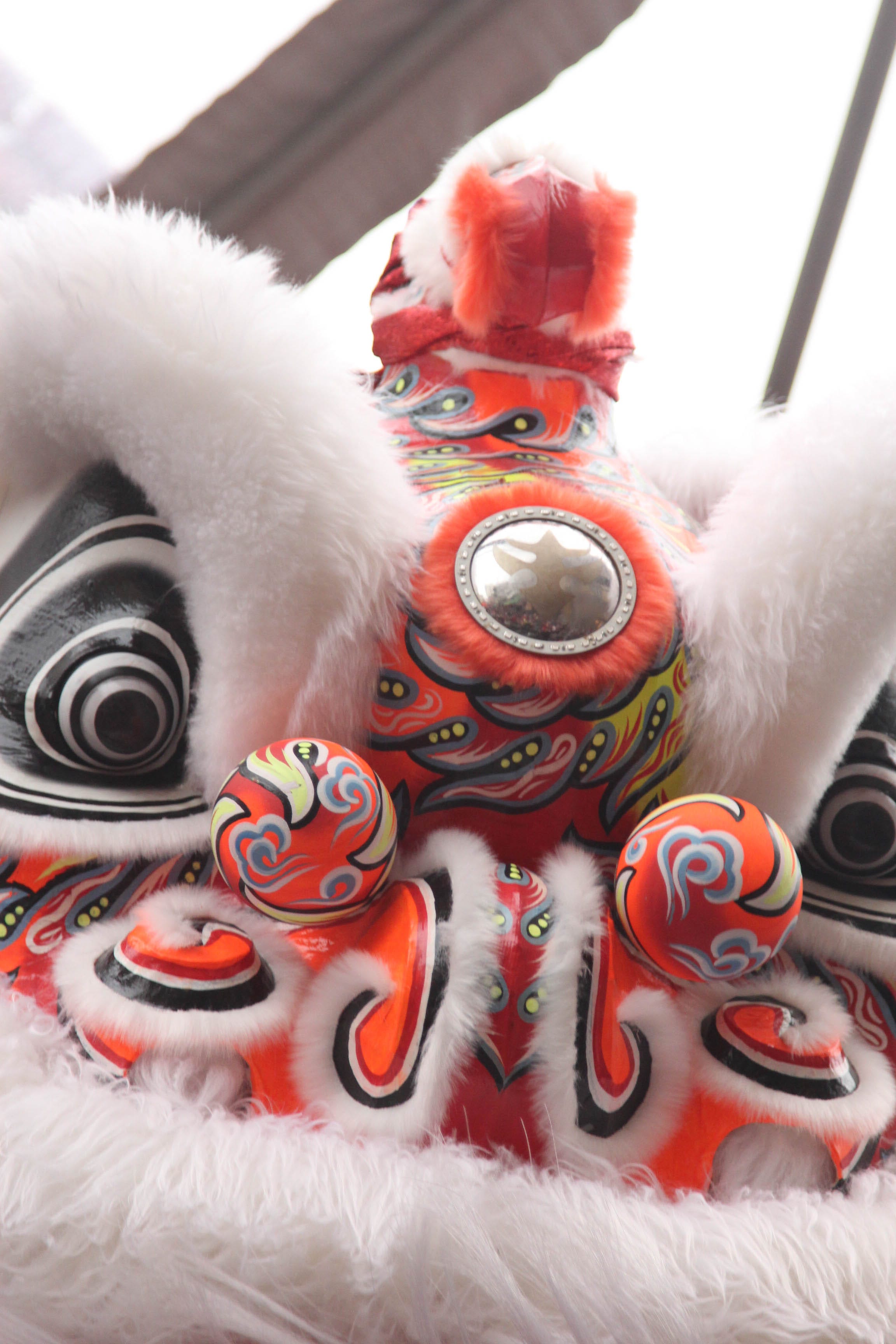
This team of high schoolers will be performing in this weekend’s Chinese New Year Parade in San Francisco, which runs from 6:00–8:00pm on Saturday. The parade, started in the 1890s, has grown into one of the largest Lunar New Year celebrations outside of Asia, with more than 100 groups performing during the event.
I got a chance to ask the youth performers about what it was like to prepare for such a big performance and how it felt to be part of such an important tradition in Chinese culture. Lucas Zhen, 18, explained to me that lion dance is a way for him to stay connected to his heritage. “At school with teachers and friends, you have to code-switch all the time if you come from a different culture, so lion dance is a way for me to stay connected with my roots,” he said.
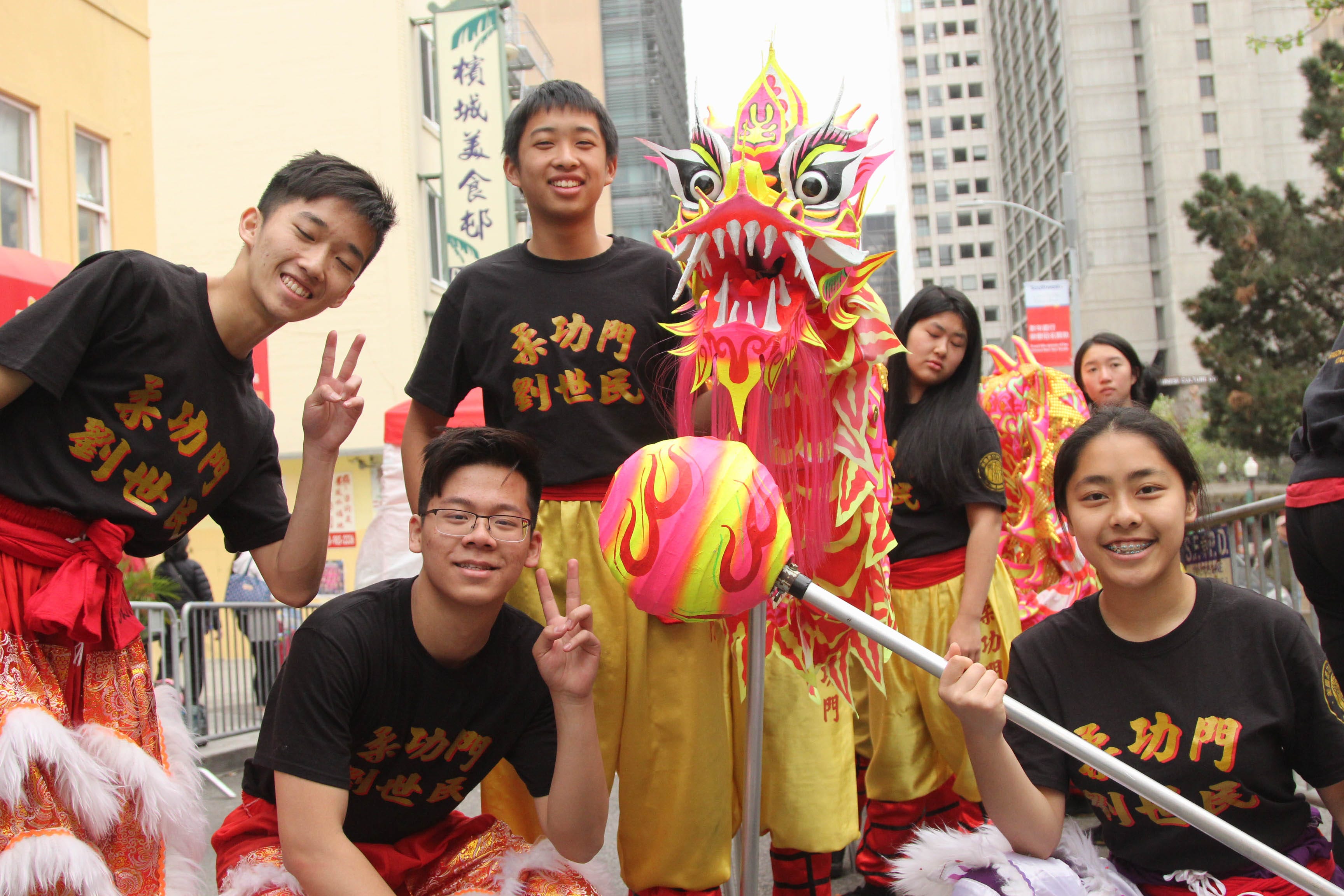
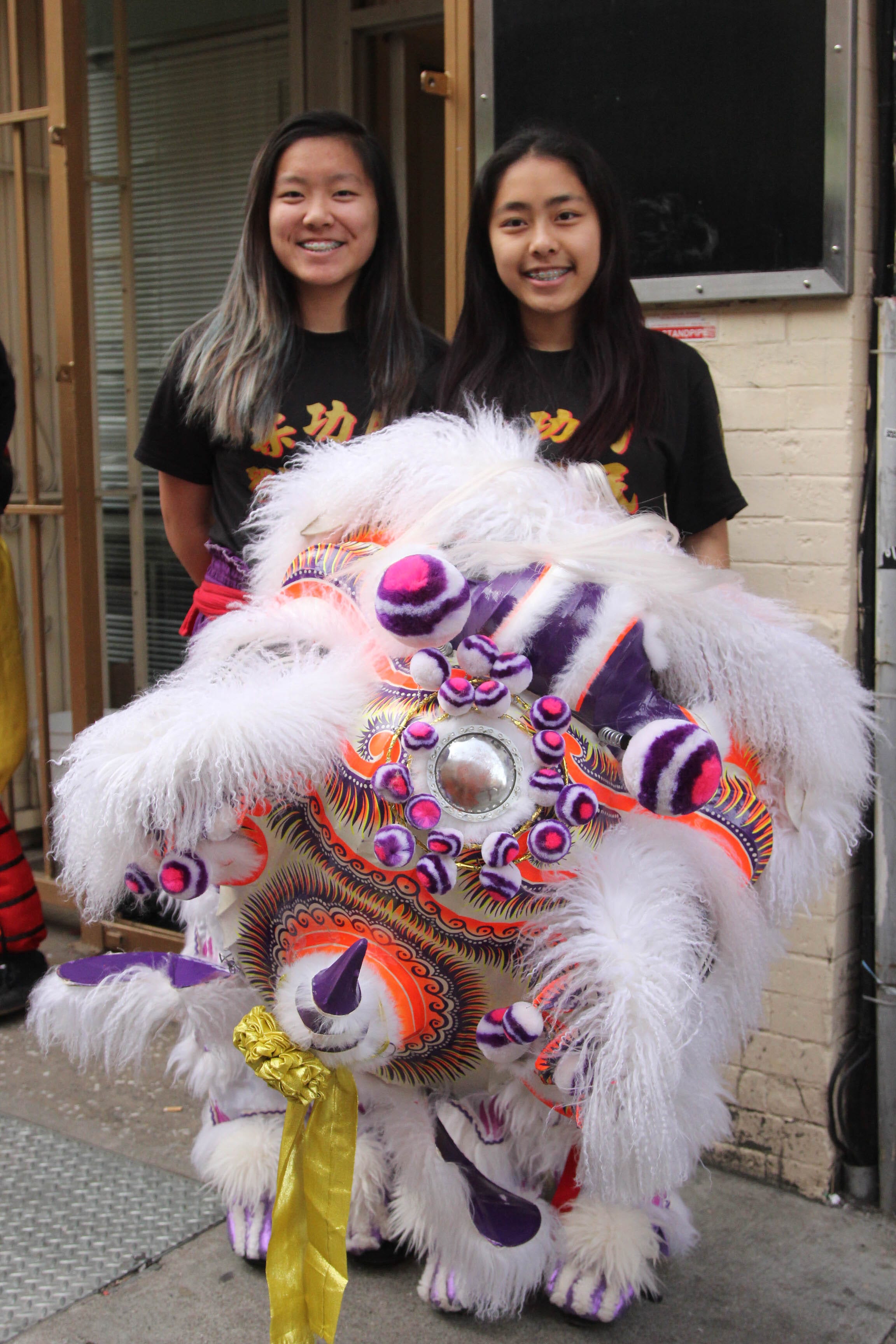
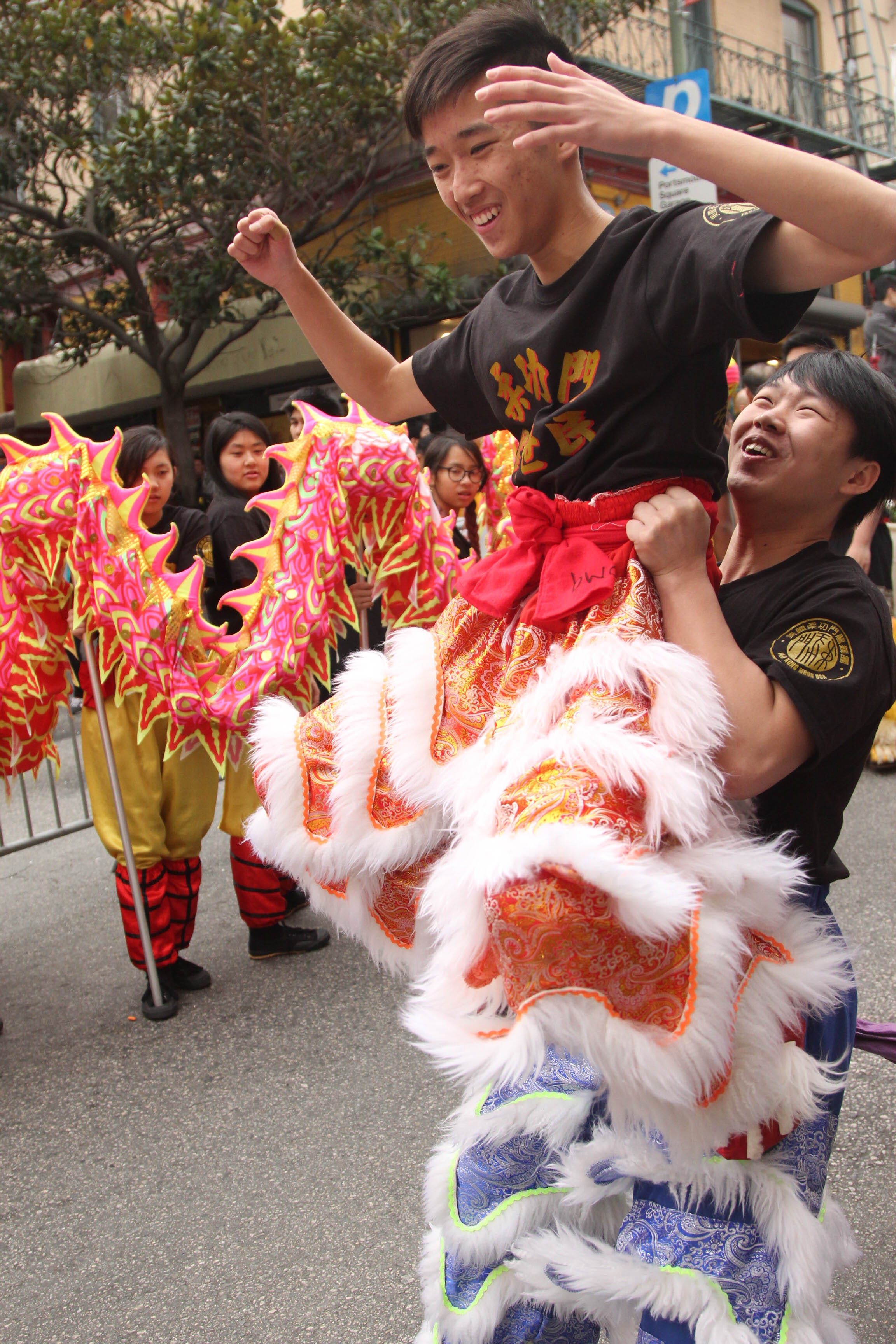


Thought to have been created during the Tang dynasty, the lion dance is typically performed on important occasions and is thought to bring good luck. The dance is a rapturous display of color, movement and sound. Percussive beats from the cymbals and gongs sync with the lion’s sharp, explosive actions. Drawing from motions found in martial arts, dancers mimic the movements of the lion to the rhythm of the instruments, bringing the animal to life and in turn, offering the audience good fortune.
Watching these kids hoist each other up above their heads while standing on wooden sawhorses with limited visibility — it’s hard not to be amazed by the sheer difficulty of the art form.
“Everyone should know … it’s harder than it looks,” Kimberly, 15, told me. Another dancer, Amy, also 15, added, “People look at sports like football and basketball and think, ‘Wow that must be so hard.’ But I think the lion dance can be so much more demanding.”
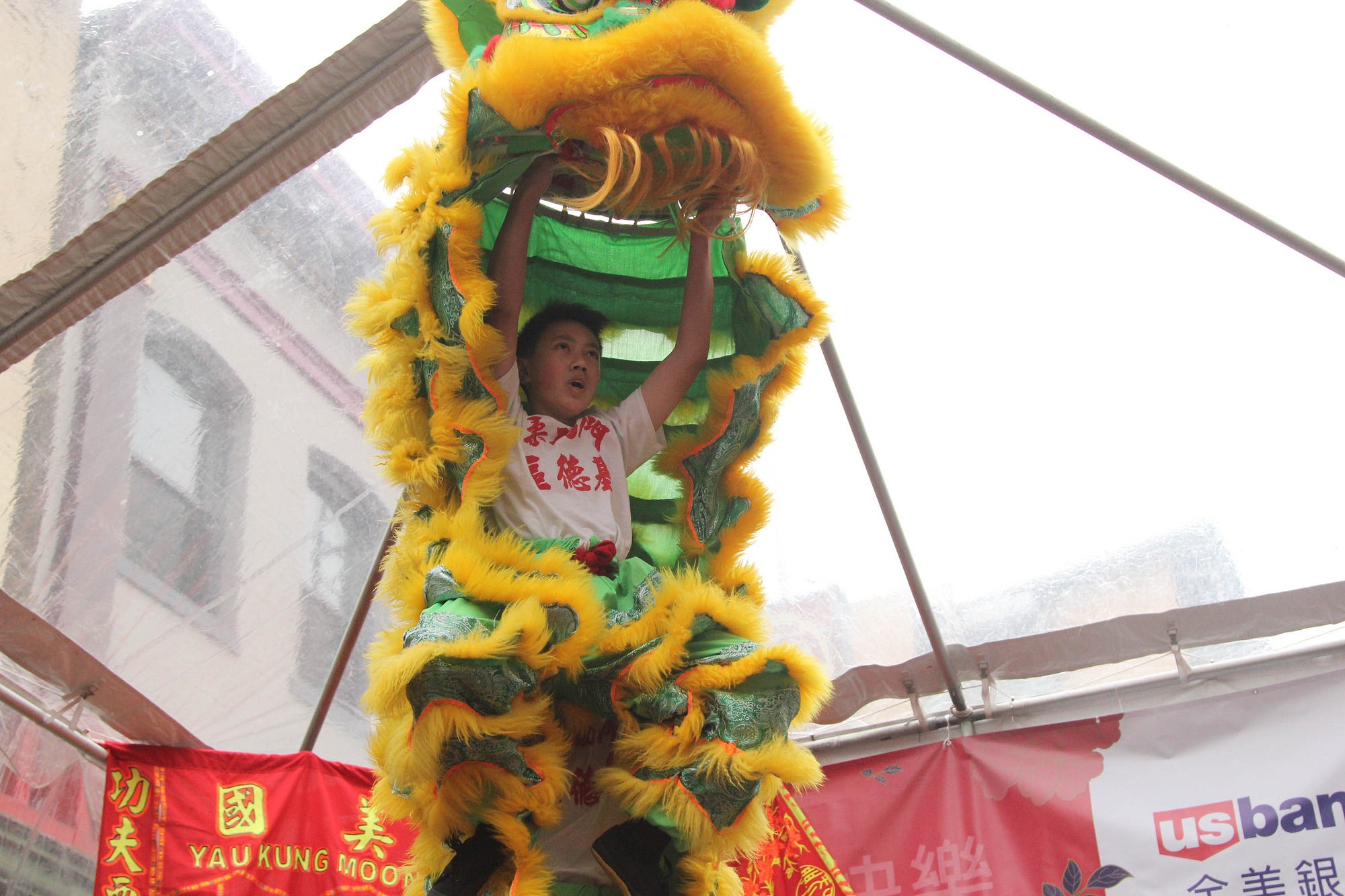
When it comes to the actual lion head, each one is painstakingly crafted, a sculpted bamboo wicker frame layered with paper-mache before being hand-painted and decorated. Each lion is commanded by two performers — one as the head, one as the tail — requiring vigorous training and discipline to be able to dance beneath the costume with limited visibility. Mastery of the lion requires complete trust in one’s teammates, great physical strength and years of practice.


So what’s it really like inside the lion?
For Lau, it’s much easier to perform disguised inside the animal costume because “everything you do is through the lion — it feels safe, and the emotions on your face are hidden, and you’re free.”
For Kaila, 15, it depends whether you’re the head or the detail. “They’re both really different roles,” she explained. “If you’re the tail, you’re basically just looking at the floor the whole time, but you really have to be there for your partner. Sometimes, if you’re the head, you get dropped, and that sucks, but it happens to everyone.”
Many first-time observers of the dance may mistake the lion costume as a dragon, another type of traditional Chinese dance — both creatures are powerful symbols in Chinese culture. One can discern the dragon as the one that is much longer and is commanded by many dancers, who hold the dragon on poles.

Lau’s goal is to keep the lion dance alive and increase its visibility to a mainstream audience. He started out by introducing the lion dance in after-school programs in middle and high schools in the city with large Asian student populations and has watched the sport grow in popularity, practice and diversity in its participants over the last few years.
“It used to be a thing you only saw Chinese kids doing,” he told me. “Now you see kids from all races and backgrounds showing interest and coming out to train.”
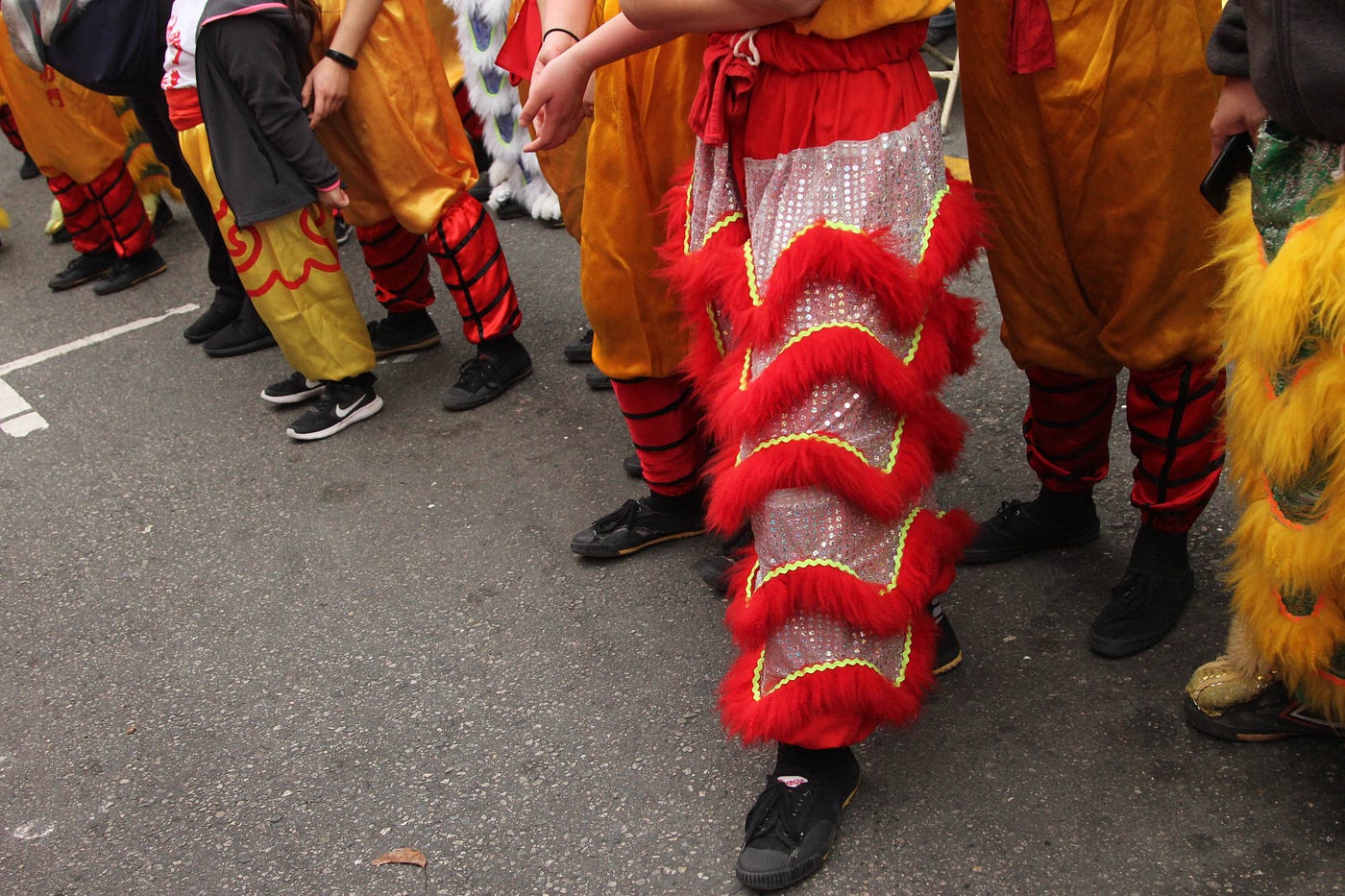
Lau’s Chinatown studio offers classes to the public and encourages anyone who is interested to come try a class. While in traditional kung fu schools in China it would have taken years of training before someone would be able to touch a lion, he’s adapted his program so everyone can be under a lion costume, even in the first class. “There will always be people from older generations who think the younger generations are doing it wrong,” he said. “But traditions change with the times.”
In addition to the big parade this weekend, Lau estimates that his team will be in at least 100 performances in February. He performs with his troupe at cultural events around the country and has recently received invites from major tech companies to perform at corporate events in the Bay Area — a sign, he says, of the tradition’s gaining notoriety. He even made an appearance on America’s Got Talent (in this clip, you can witness Sharon Osbourne’s wonderment at the troupe’s precise footwork.)
“I do feel like what we are doing is pioneering lion dance in the US,” Lau said. “We want to bring it mainstream and see how we can incorporate cross-cultural elements from American and Chinese cultures.”
The Chinese New Year Parade takes place from 6:00 to 8:00 p.m. on this Saturday, February 24. Check out last year’s photo of the Chinese New Year Parade.








